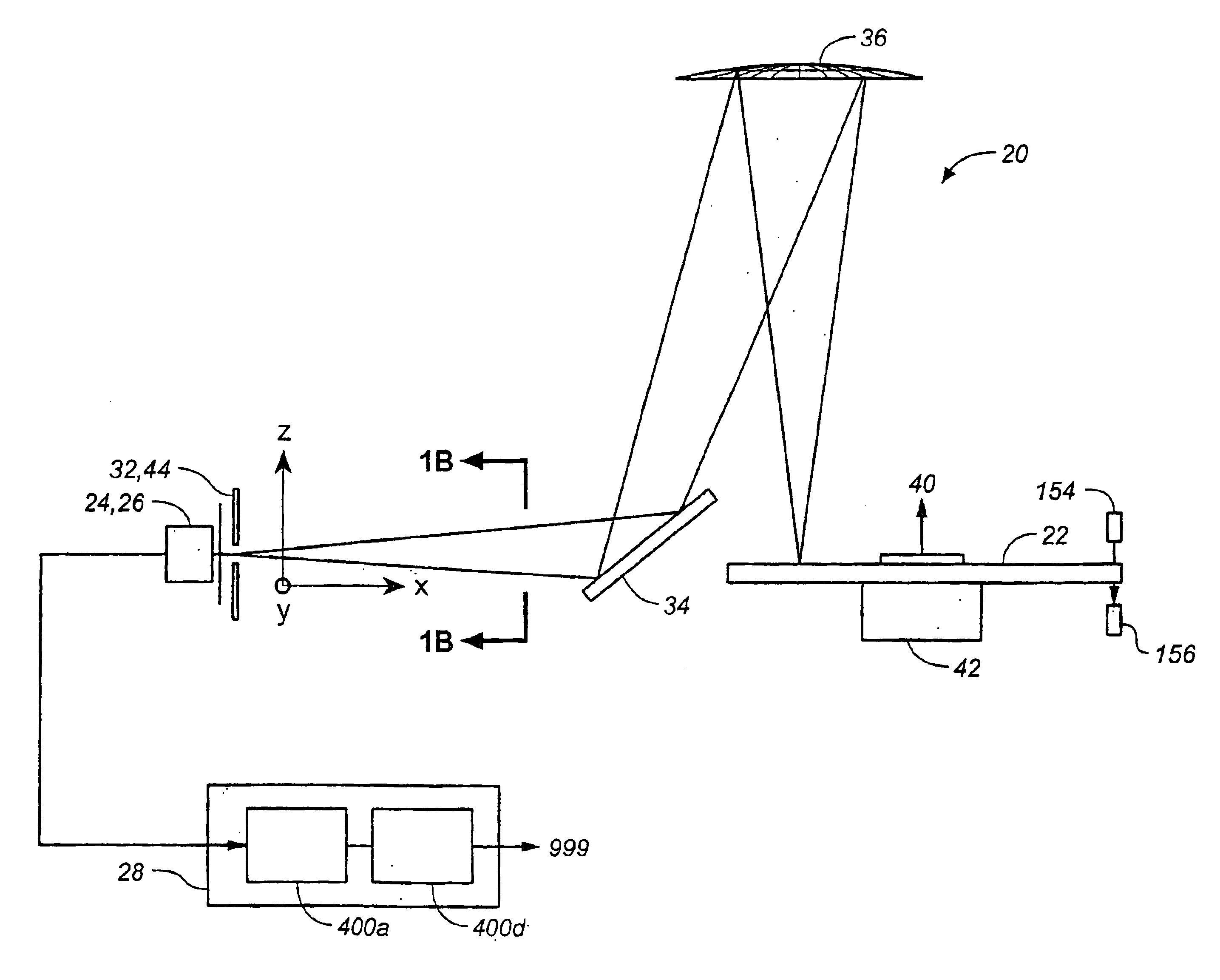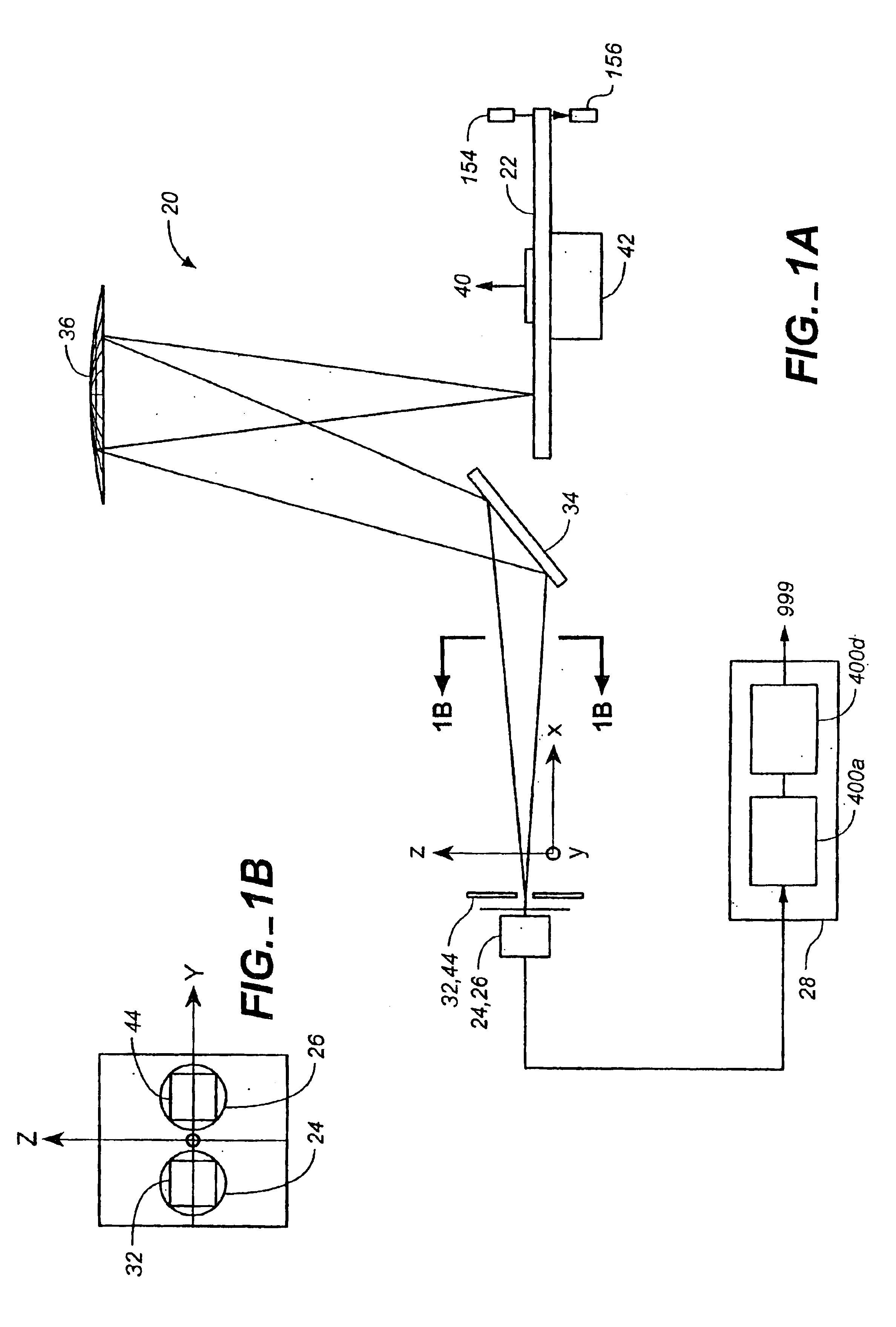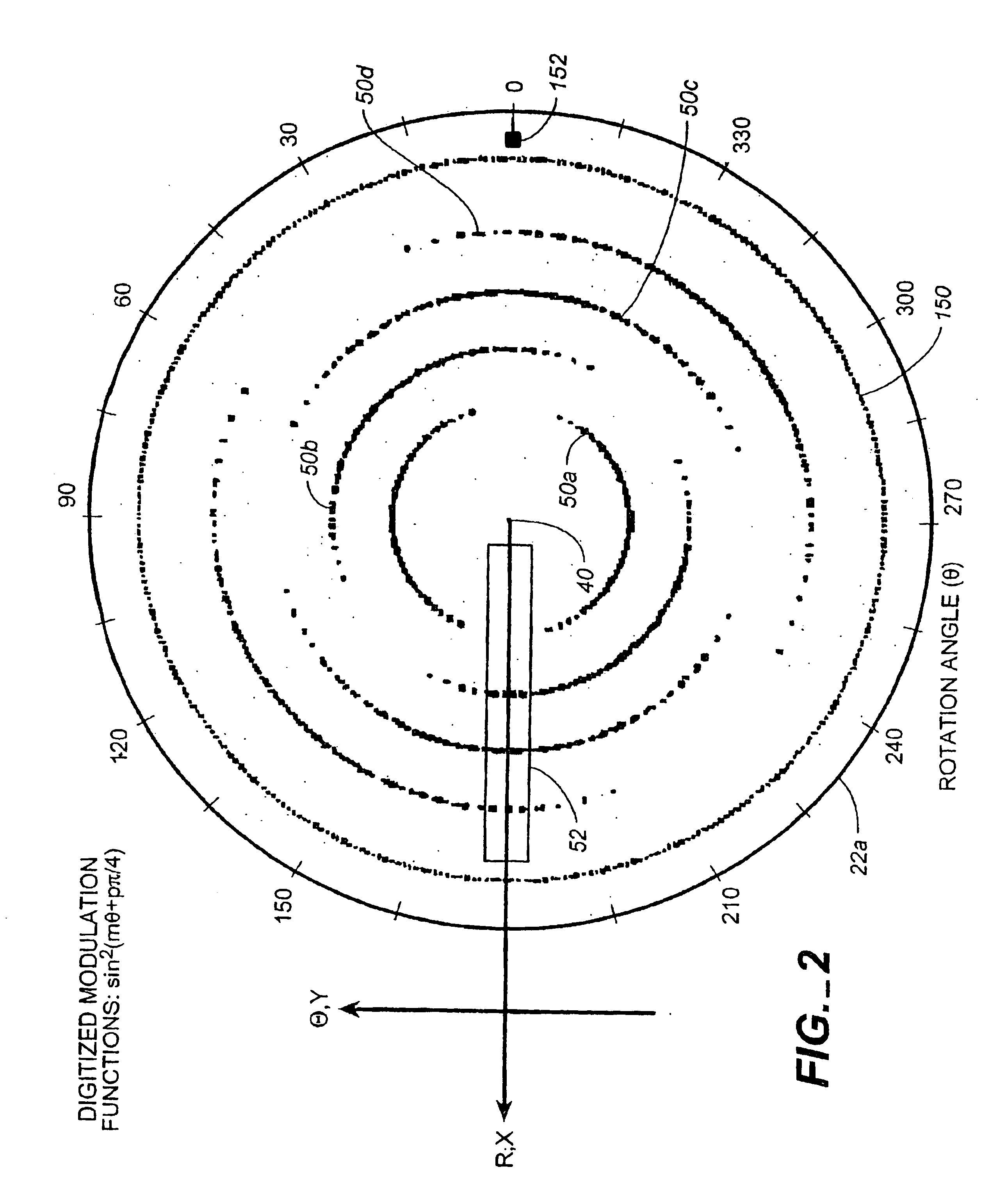[0008]In many practical embodiments, digitized versions or replicas of the smooth functions may be used instead of analog ones while retaining most of the advantages of the invention. The small interference effects caused by digitization can either be ignored, or accounted for and corrected as required by the application. The modulation functions of two dispersed radiation filters for two different channels are considered to be substantially orthogonal to each other when it is possible to differentiate the contribution to the detector signal caused by the wavelength component in one of the two channels from that caused by the wavelength component in the other channel without having to solve a simultaneous system of equations. The definition also allows for a finite number of corrections to compensate for the effects of digitization. As explained below, for different applications, this definition may be applied differently. In this manner, the time required to decode the amplitude coefficients is greatly reduced. Furthermore, the modulators can be made with filters specifically adapted for certain analytical functions. If modulators with different characteristics are called for to perform a different analytical function, it is a simple matter to replace the modulator by one with the desired properties without altering the system apparatus. Another advantage of the invention lies in that the dispersed radiation filters of a modulator are at fixed spatial relationship to each other, so that wavelength calibration is reduced in determining the alignment of the dispersed image onto the radius of the disc.
[0009]One embodiment of the spectrum analyzer of this invention according to one aspect of the invention comprises a source providing radiation, where the radiation includes a plurality of selected wavelength components. Radiation from the source is collected and focused to form an image dispersed by wavelength onto a plane. A two-dimensional spatial modulator positioned in the plane modulates amplitudes of the wavelength components to encode each component, so that the amplitude of each encoded component is a function of time. Each of the functions has three or more distinct levels of contrast. The encoded beam is collected and directed towards a detector and signals generated by the detector are analyzed. Preferably, at least two of the modulation functions for encoding two corresponding wavelength components are substantially orthogonal, so that the amplitudes of the two encoded components present in the total detector signal may be distinguished from each other without solving a system of simultaneous equations.
[0010]Another aspect of the invention and useful for the above-described spectrum analyzer is a two-dimensional spatial radiation modulator adapted to be rotated about an axis. The modulator has a plurality of dispersed radiation filters at different radii from the axis for modulating amplitudes of different wavelength components of an incident radiation beam to encode the beam, so that the amplitude of each encoded component is a function of a rotation angle of the modulator about the axis. Preferably, one or more of the filters has a modulation function that encodes the amplitude of the corresponding component so that the encoded component has three or more distinct levels of contrast over time when the modulator is rotated about the axis. More preferably, the modulation functions are smooth functions or digitized replicas thereof, obtained by rounding up or rounding down to a finite number of levels of contrast, such that the modulation functions of two filters for modulating two different wavelength components are substantially orthogonal.
[0011]Another two-dimensional spatial radiation modulator that will be useful for spectral analysis includes a two-dimensional spatial radiation modulator adapted to be rotated about an axis. The modulator has at least one dispersed radiation filter being in the shape of a band surrounding the axis, where the radial position of the band is modulated between two different radii from the axis, such that the center wavelength of the reflected radiation is modulated between two different wavelengths when the modulator is rotated about the axis. Preferably the band is serpentine in shape.
[0012]Another two-dimensional spatial radiation modulator useful for spectral analysis is adapted to be rotated about an axis. The modulator has at least one dispersed radiation filter in the shape of a substantially continuous band around the axis, where the band has a width that varies as a function of a rotational angle of the modulator about the axis, to modulate the bandwidth of the reflected radiation.
[0013]In another embodiment of the invention, a spectrum analyzer for analyzing a sample comprises a source to provide excitation radiation comprised of a first plurality of wavelength components, and means for collecting and focusing a beam of radiation from the excitation source to form a first image dispersed by wavelength onto a first plane. A first two-dimensional spatial radiation modulator is positioned in the first plane to modulate the amplitude of the first plurality of wavelength components, where such amplitudes are periodically modulated using three or more distinct levels of contrast. The encoded excitation beam is collected and focused onto the sample, causing the sample to emit or scatter a beam of radiation. The emitted or scattered beam of radiation from the sample is collected and focused to form a second image dispersed by wavelength onto a second plane. A second two-dimensional spatial radiation modulator positioned in the second plane modulates the amplitudes of a second plurality of wavelength components in said emitted or scattered beam to encode such beam, where such amplitudes are periodically modulated using three or more distinct levels of contrast. The encoded emitted or scattered beam is collected and focused onto a detector and a time-based signal generated by the detector is analyzed for cross-modulation phenomena.
 Login to View More
Login to View More  Login to View More
Login to View More 


